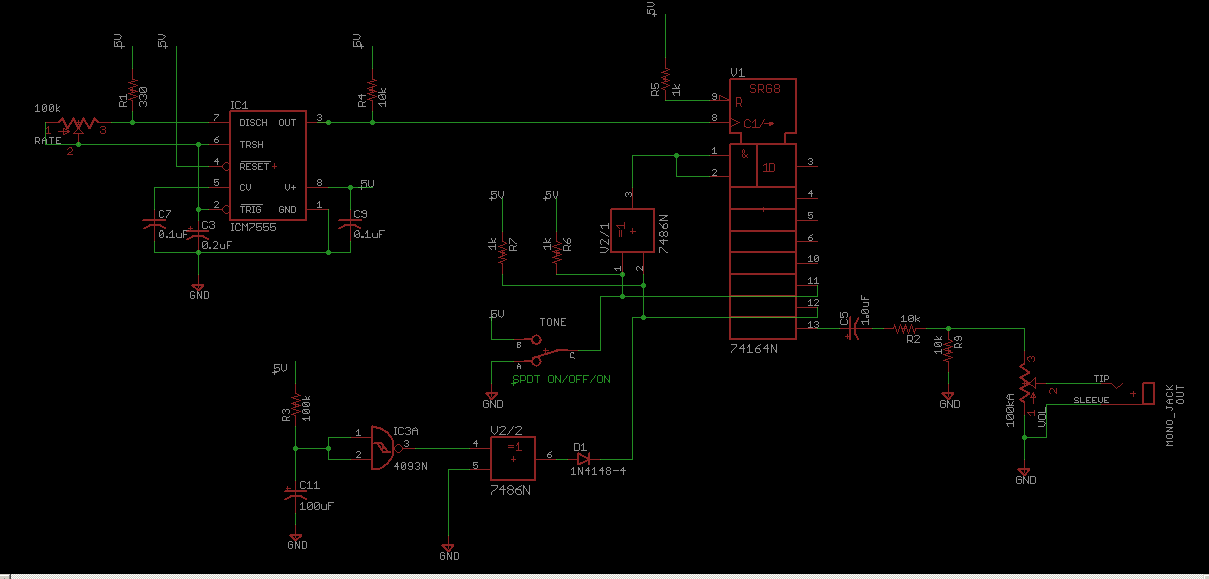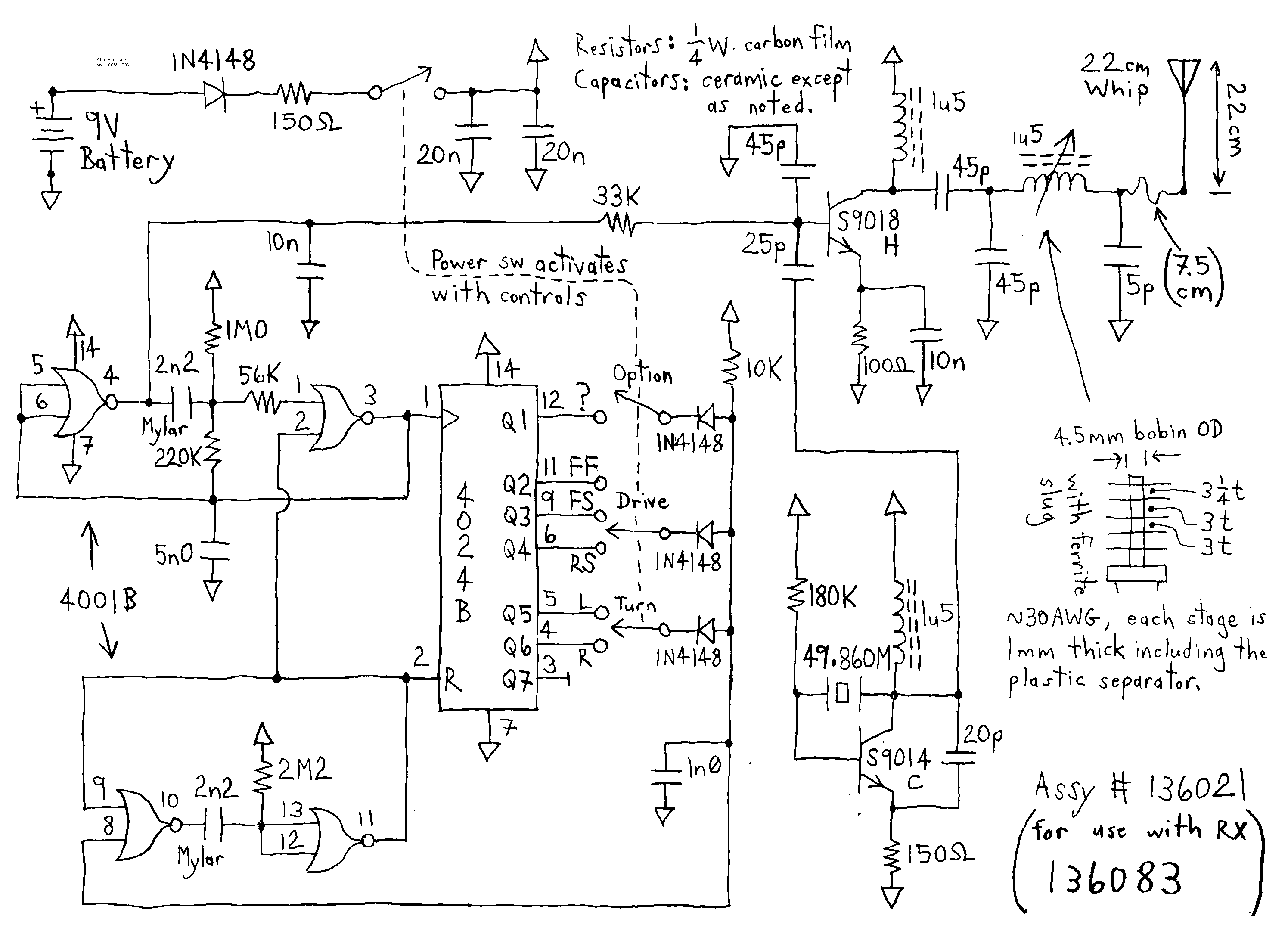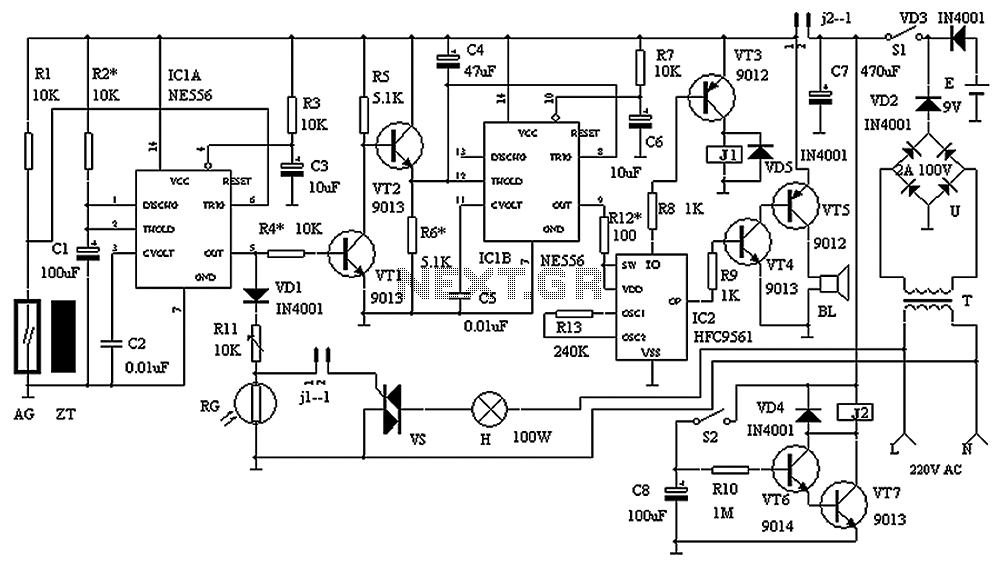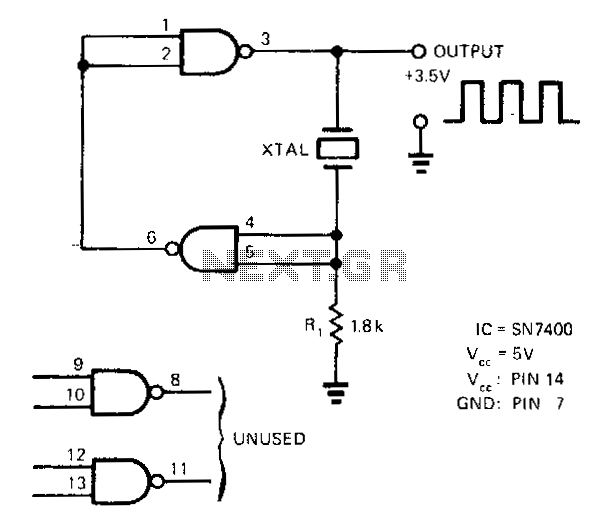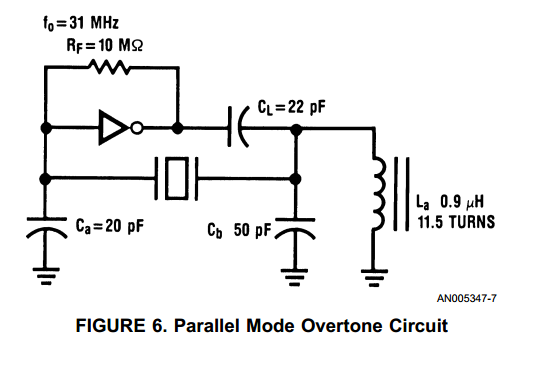
Resonance generators by 4011 CMOS Gate
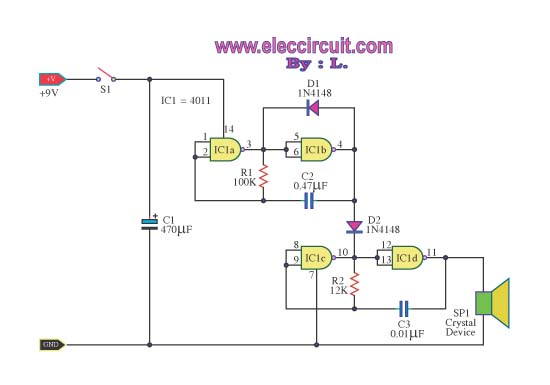
This resonance generator circuit, also known as an oscillating sound generator, is designed using the CMOS integrated circuit 4011 (Quad 2-Input NAND Gate). It consists of four NAND gates. Each oscillator circuit utilizes two gates. The circuit is capable of generating higher frequencies using IC1c and IC1d, while IC1a and IC1b are responsible for producing frequencies in a lower range. A low-frequency pulse is generated to control the operation of another part of the circuit. Diode D1 is connected to IC1c and IC1d to facilitate low-frequency pulse output, while diode D2 is responsible for generating the oscillating sound. Switch S1 allows for the adjustment of the oscillation speed, enabling it to oscillate slowly. The capacitor C1 does not require precise value specifications for the circuit to function properly. The speaker (SP1) should be a crystal transducer.
This circuit employs a CMOS 4011 integrated circuit, which contains four NAND gates that can be configured to create two separate oscillator circuits. Each oscillator circuit is composed of two NAND gates. The configuration allows for the generation of two distinct frequency ranges: one higher frequency range utilizing IC1c and IC1d, and a lower frequency range utilizing IC1a and IC1b.
The operation of the circuit is initiated by generating a low-frequency pulse, which serves to control the functioning of the oscillators. Diode D1 is strategically placed to manage the output from IC1c and IC1d, ensuring that the low-frequency pulse is directed appropriately. In contrast, diode D2 is critical for producing the oscillating sound, effectively converting the electrical signals into audible sound waves.
The inclusion of switch S1 provides user control over the oscillation speed, allowing for gradual adjustments. This feature is particularly useful in applications where varying sound frequencies are required. The discharge characteristics of capacitor C1 are not stringent, meaning that it can function effectively without needing to be of a highly precise value. This flexibility simplifies the circuit design and component selection process.
The output sound is delivered through a speaker (SP1), which should be a crystal transducer. This type of transducer is chosen for its ability to accurately reproduce the sound generated by the oscillations, making it suitable for applications in sound generation and signal processing. Overall, the circuit offers a versatile solution for generating oscillating sounds across different frequency ranges, utilizing standard components and straightforward design principles.This Resonance generators (oscillating sound generator) circuit, designed using CMOS integrated circuit number 4011(CMOS Quad 2-Input NAND Gate). Contains within 4 nand gate. To each oscillator circuit has a 2 circuit. This circuit provides a higher frequency, IC1c and includes IC1d. Another one, the frequency range below and include IC1a IC1b. The low frequency pulse is sent to control the work of another. Diode D1 will IC1c and IC1d a pulse out at low frequencies. The diode D2 will cause the oscillating sound. S1 open voting is oscillating slowly lowered slowly. The discharge of capacitor C1 value of the equipment does not need to be very accurate. SP1 except that it must be a transducer crystal. 🔗 External reference
This circuit employs a CMOS 4011 integrated circuit, which contains four NAND gates that can be configured to create two separate oscillator circuits. Each oscillator circuit is composed of two NAND gates. The configuration allows for the generation of two distinct frequency ranges: one higher frequency range utilizing IC1c and IC1d, and a lower frequency range utilizing IC1a and IC1b.
The operation of the circuit is initiated by generating a low-frequency pulse, which serves to control the functioning of the oscillators. Diode D1 is strategically placed to manage the output from IC1c and IC1d, ensuring that the low-frequency pulse is directed appropriately. In contrast, diode D2 is critical for producing the oscillating sound, effectively converting the electrical signals into audible sound waves.
The inclusion of switch S1 provides user control over the oscillation speed, allowing for gradual adjustments. This feature is particularly useful in applications where varying sound frequencies are required. The discharge characteristics of capacitor C1 are not stringent, meaning that it can function effectively without needing to be of a highly precise value. This flexibility simplifies the circuit design and component selection process.
The output sound is delivered through a speaker (SP1), which should be a crystal transducer. This type of transducer is chosen for its ability to accurately reproduce the sound generated by the oscillations, making it suitable for applications in sound generation and signal processing. Overall, the circuit offers a versatile solution for generating oscillating sounds across different frequency ranges, utilizing standard components and straightforward design principles.This Resonance generators (oscillating sound generator) circuit, designed using CMOS integrated circuit number 4011(CMOS Quad 2-Input NAND Gate). Contains within 4 nand gate. To each oscillator circuit has a 2 circuit. This circuit provides a higher frequency, IC1c and includes IC1d. Another one, the frequency range below and include IC1a IC1b. The low frequency pulse is sent to control the work of another. Diode D1 will IC1c and IC1d a pulse out at low frequencies. The diode D2 will cause the oscillating sound. S1 open voting is oscillating slowly lowered slowly. The discharge of capacitor C1 value of the equipment does not need to be very accurate. SP1 except that it must be a transducer crystal. 🔗 External reference
